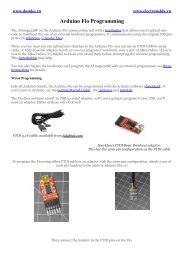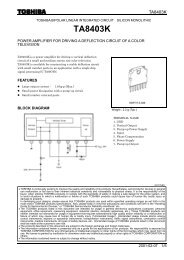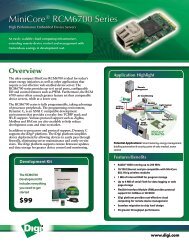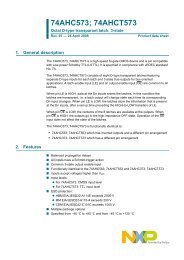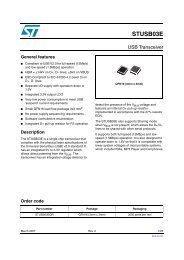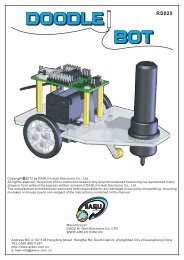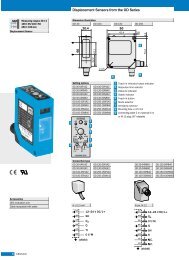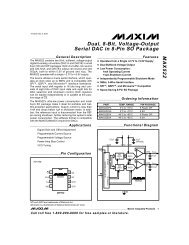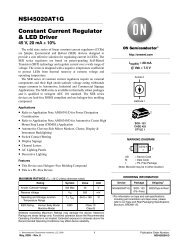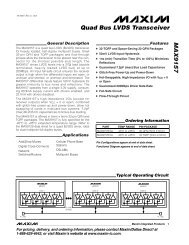8 3RW3 semiconductor motor control unit (soft starter) - Siemens ...
8 3RW3 semiconductor motor control unit (soft starter) - Siemens ...
8 3RW3 semiconductor motor control unit (soft starter) - Siemens ...
Create successful ePaper yourself
Turn your PDF publications into a flip-book with our unique Google optimized e-Paper software.
<strong>3RW3</strong> <strong>semiconductor</strong> <strong>motor</strong> <strong>control</strong> <strong>unit</strong><br />
8.2.4 Comparison of the <strong>3RW3</strong> <strong>semiconductor</strong> <strong>motor</strong> <strong>control</strong> <strong>unit</strong> (<strong>soft</strong> <strong>starter</strong>)<br />
with the 3RA star-delta combination<br />
The comparison of <strong>soft</strong> <strong>starter</strong> and star-delta combinations shows that the<br />
<strong>3RW3</strong> has the following advantages (example here 22 kW):<br />
<strong>3RW3</strong> <strong>soft</strong> <strong>starter</strong><br />
Width: 55 mm<br />
Wiring: 3 <strong>motor</strong> supply leads<br />
Selectable startup parameters<br />
3RA star-delta <strong>starter</strong><br />
Width: 165 mm<br />
Wiring: 6 <strong>motor</strong> supply leads<br />
None<br />
Minimum current values at startup Fixed current ratios (I * = 1/3I d )<br />
No dangerous switchover current peaks<br />
Switchover current peaks when switching<br />
from star to delta<br />
Special variant for Dahlander <strong>motor</strong>s —<br />
Soft coasting-down function —<br />
Table 8-4: Comparison of <strong>3RW3</strong>/3RA<br />
8.2.5 Notes on configuration<br />
In order for a <strong>motor</strong> to reach its rated speed, <strong>motor</strong> torque at any given time<br />
during startup must be greater than the torque needed by the load, since<br />
otherwise a stable operating point would be reached before the <strong>motor</strong><br />
achieved its rated speed (the <strong>motor</strong> would "drag to a stop"). The difference<br />
between <strong>motor</strong> torque and load torque is the accelerating torque that is<br />
responsible for the increase in the speed of the drive. The lower the accelerating<br />
torque, the longer the <strong>motor</strong> needs to run up to its operating speed.<br />
Starting torque<br />
Reducing the terminal voltage of a three-phase asynchronous <strong>motor</strong><br />
reduces the <strong>motor</strong>'s starting current and the starting torque.<br />
Current is directly proportional to voltage, whereas voltage is proportional to<br />
the square root of <strong>motor</strong> torque.<br />
Example:<br />
Motor = 55 kW, rated current = 100 A, starting current = 7 x rating current,<br />
<strong>motor</strong> torque = 355 Nm, starting torque = 2.4 x rated torque<br />
Settings for the <strong>soft</strong> <strong>starter</strong>: starting voltage 50 % of rated voltage for <strong>motor</strong><br />
The reductions are thus as follows:<br />
• The starting current is reduced to half the starting current for a direct<br />
start: 50 % of (7 x 100 A) = 350 A<br />
• Starting torque is reduced to 0.5 x 0.5 = 25 % of the starting torque for a<br />
direct start: 25 % of 2.4 x 355 Nm = 213 Nm<br />
SIRIUS System Manual<br />
8-16 GWA 4NEB 430 0999-02c


